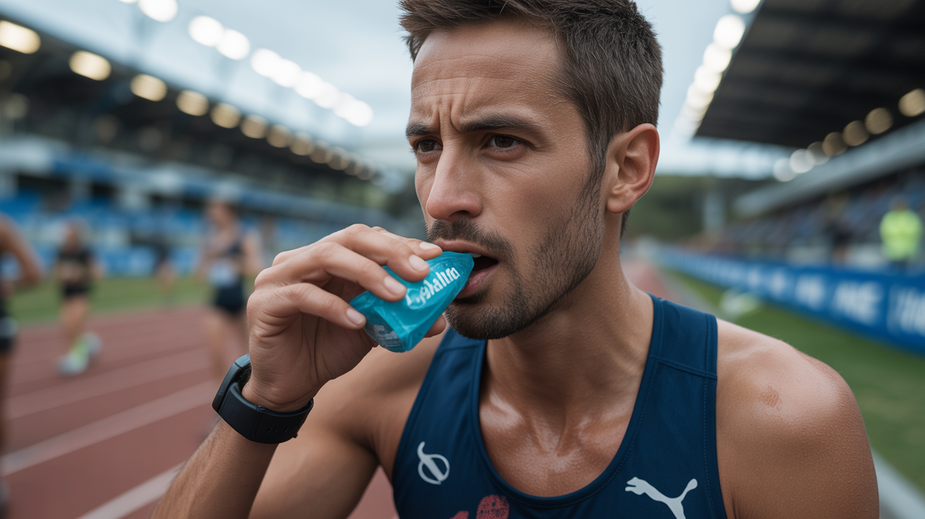Gut Health Preservation Tactics
When tackling back-to-back races, your digestive system works overtime. The stress of repeated exertion, irregular fueling schedules, and potentially different types of fuel can leave your gut feeling anything but happy. Protecting your gut health is just as crucial as muscle recovery for peak performance in consecutive events.
One key strategy is to rotate your fuel sources. Relying solely on one type of energy gel or drink can sometimes lead to intolerance or GI upset over time. By alternating between different brands, textures (gels, chews, liquid carbs, even carefully selected solid foods), and ingredient profiles, you reduce the repetitive exposure to specific compounds that might irritate your gut. This diversification makes your gut more resilient and helps your system handle the varied demands placed upon it during multi-day events.
Maintaining a healthy gut microbiome is also paramount. The trillions of bacteria in your gut play a vital role in nutrient absorption, immune function, and even mood. The physical and mental stress of racing can negatively impact this delicate balance. Incorporating fermented foods into your recovery meals can be highly beneficial. Items like yogurt with live active cultures, sauerkraut, kimchi, or kefir introduce beneficial probiotics, helping to replenish and support your gut flora. Prioritizing gut-friendly foods assists your body in efficiently processing nutrients needed for recovery and maintaining overall resilience.
For athletes prone to digestive distress, especially under pressure, temporarily employing low-FODMAP strategies might be necessary. FODMAPs (Fermentable Oligosaccharides, Disaccharides, Monosaccharides, and Polyols) are types of carbohydrates that can be poorly absorbed by some individuals, leading to bloating, gas, and pain. While not a long-term diet, a short-term, targeted low-FODMAP approach between races could help calm an irritated gut and reduce symptoms, allowing for better nutrient absorption and comfort before the next event. Always consider consulting a sports dietitian or healthcare professional before implementing significant dietary changes like a low-FODMAP approach (Learn more about FODMAPs from Monash University).
By consciously implementing these tactics – diversifying fuels, supporting your microbiome with fermented foods, and being prepared to use temporary low-FODMAP strategies if needed – you can significantly improve your gut’s resilience and comfort, ensuring it’s ready to support you through the finish line of every race.
Here is a video discussing common gut issues faced by athletes and strategies to manage them:
Real-Time Adaptation During Event Series
Success in back-to-back races often hinges on your ability to adapt your fueling and recovery strategies on the fly. While pre-race plans are essential, the true test comes from listening to your body and adjusting based on real-time feedback received throughout the event series. This dynamic approach allows you to address emerging issues before they derail performance.
One powerful tool for gaining objective, real-time insight is blood glucose monitoring 📊. Technologies like continuous glucose monitors (CGMs) or even strategic fingerstick tests can provide valuable data on how your body is processing fuel during and between efforts. Spikes or crashes can signal issues with carbohydrate intake timing or type, helping you fine-tune your approach immediately rather than waiting for negative symptoms to manifest. Understanding your typical glucose response profile under stress is key to making informed decisions.
Beyond objective data, perceived exertion offers crucial subjective feedback. Paying attention to how hard an effort feels compared to your training expectations can indicate underlying fatigue or fueling deficits. Utilizing scales like the Borg RPE (Ratings of Perceived Exertion) can help you quantify this feeling. If an easy effort feels harder than it should, it’s a strong signal that recovery or fuel intake needs immediate adjustment. Your subjective feeling is a critical piece of the puzzle, complementing objective metrics.
Finally, preparing for potential issues is vital. Creating decision trees for fuel crises 🌳🗺️ can provide a clear roadmap when things go wrong. What do you do if your stomach rejects your planned fuel source? What’s the backup if you unexpectedly run low on supplies? Having pre-determined ‘if-then’ scenarios for common race day nutrition problems allows for quick, confident action under pressure, minimizing downtime and maximizing recovery potential for the next event. This proactive planning is an indispensable part of real-time adaptation.








